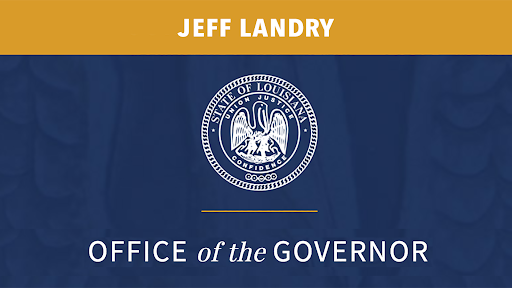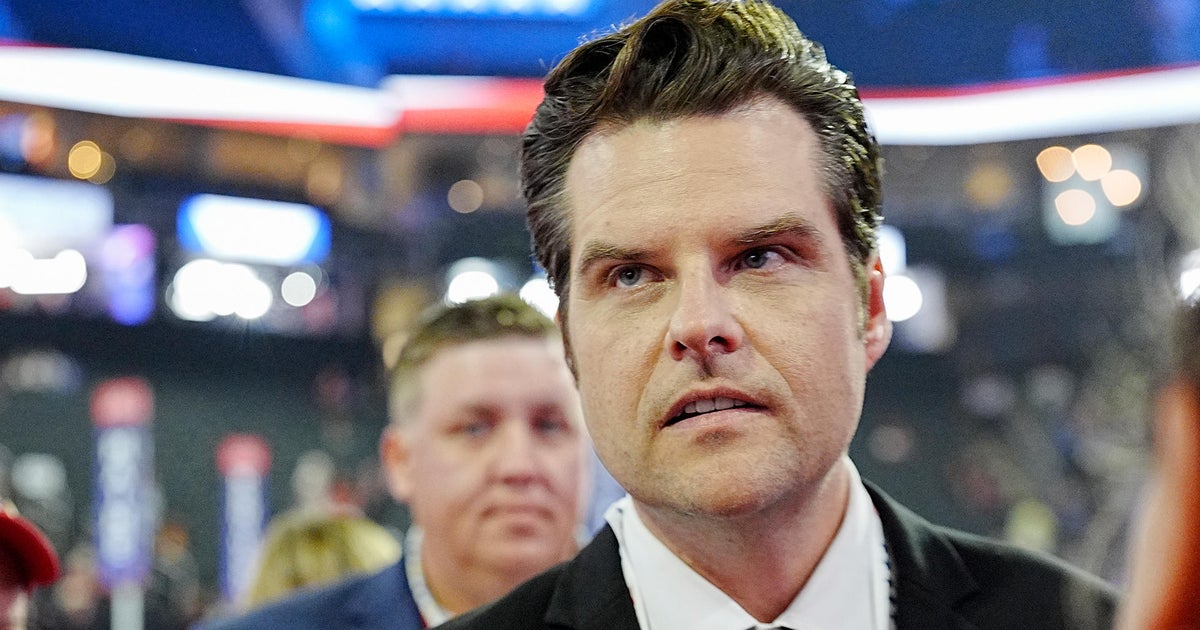Louisiana
Gov. Edwards and DNR Announce 500 Orphaned Wells Plugged with BIL Funding in 6.5 Months of Work

BATON ROUGE, La. – Today, Gov. John Bel Edwards and Louisiana Department of Natural Resources (DNR) Secretary Tom Harris announced that contractors have plugged more than 500 orphaned well sites in the first six-and-a-half months of work funded by the Bipartisan Infrastructure Law (BIL).
“The work we’ve been able to accomplish in Louisiana using BIL funding is nothing short of transformational,” said Gov. Edwards. “We’ve plugged more than 500 orphaned wells in just six-and-a-half months of work. I want to thank Sec. Harris and his team for ensuring this important work is done quickly and efficiently, as well as Rep. Troy Carter, Sen. Bill Cassidy, and Pres. Biden for their support of the Bipartisan Infrastructure Law that made this effort a reality.”
The current count of 519 wells plugged since mid-January with the BIL funding surpasses the highest number ever plugged by the state Oilfield Site Restoration (OSR) program in a full year by 239 wells and roughly triples the average OSR full-year plugging figures over the past several years. The $25-million Initial Grant from the BIL, paired with $12.7 million in BIL funding provided by the U.S. Fish and Wildlife Service (USFWS), helped attract larger-scale contractors who normally do not bid on smaller individual projects.
The two primary contractors chosen by DNR have been working with more than a dozen crews in the field, with work expected to be continuous through October 2023.
“We had hoped the BIL funding would allow us to plug about double the average number of wells our state OSR program has plugged in recent years, which is around 160, but we’ve more than tripled that with about two months to go on the grant funding,” Harris said. “DNR staff and our contractors were very motivated early on to set a strong pace to get ahead of the game before spring weather slowed them, but weather has not been the problem we feared, and they have held a pace that could see us double our highest-ever number of orphaned wells plugged in a single year.”
Harris said he hopes that the pace and scope of the work done under this Initial Grant from the BIL will strengthen the case for increasing the amount Louisiana receives in later rounds of funding targeting orphaned wells.
The U.S. Department of the Interior (DOI) is providing the BIL funding, having awarded Louisiana a $25-million Initial Grant to address orphaned wells in the state. The BIL funding is being administered by the DOI as part of an overall $1.15 billion announced in January 2022 for states to plug and remediate orphaned wells. DOI has indicated states will receive additional phases of funding this year – though full details have not yet been announced.
In addition, the USFWS partnered with DNR to have the Louisiana OSR program use $12.7 million in USFWS BIL funding to engage state OSR contractors in plugging orphaned wells on federal wildlife refuges.
The Initial Grant is more than double the average annual amount of funding the regular state Oilfield Site Restoration, with which the state Office of Conservation has plugged an average of about 160 wells a year in recent years, depending on weather and well locations/depth and the need to draw from the fund to respond to emergencies.
Typically, orphaned well sites in Louisiana are wells designated by the Office of Conservation as not having a responsive operator, either due to the operator going out of business or being unable or unwilling to maintain their sites in compliance with state regulations. Louisiana’s orphaned well count is at about 4,500 sites, accelerated by downturns in the prices of oil and gas in recent years that put financial strains on oil and gas companies and their ability to maintain their sites or their businesses.
DOI announced the funding being awarded to Louisiana in October 2022 and DNR chose its primary contractors in December 2022, with the first well plugged on January 17, 2023 in the Caddo Pine Island Field in Caddo Parish – home to some of the densest well populations in the state, orphaned or operating.
DNR is also using the BIL funding to meet other DOI requirements – including establishing protocols and programs for methane and water quality testing and monitoring; addressing disproportionate impacts to disadvantaged communities from orphaned wells; and creating jobs to restore oilfield sites.
Orphaned well sites the state plans to be addressed with these Initial Grant contracts are primarily located in north Louisiana, a region that has a greater concentration of orphaned wells. The Office of Conservation’s Shreveport and Monroe districts contain more than 3,100 of the state’s roughly 4,500 current orphaned well sites.
Contractors interested in future contracts, as well as the general public interested in progress of DNR’s BIL initiatives, can visit www.dnr.la.gov/fedprojects to get the latest updates and information on DOI guidance, DNR activity and BIL orphaned well projects in Louisiana. For more general information on BIL projects across Louisiana, including an interactive map with projects broken down by type and congressional district, the public should go to infrastructure.la.gov.

Louisiana
Top 10 elementary schools in Louisiana, according to News & World Report’s rankings

Huntington’s Jamarion Washington is a Times Athlete of the Week.
Huntington’s Jamarion Washington talks about his team playing Edna Karr in the LHSAA football playoffs
U.S. News & World Report has released a database comprised of the top elementary and middle schools in 2025 in each state.
The rankings of schools can even be narrowed down by city and district levels.
Top 10 elementary schools in Louisiana
There are numerous Louisiana elementary and middle schools ranked within U.S. News’ database, and here are the top ten best ranked elementary schools statewide in Louisiana.
No. 1 T.S. Cooley Elementary Magnet School
According to U.S. News, T.S. Cooley Elementary Magnet School, located in Lake Charles, is ranked number one in Louisiana elementary schools and is a part of Calcasieu Parish Public Schools.
The student population of T.S. Cooley Elementary Magnet School is 300, and the school serves K-5.
No. 2 Metairie Academy for Advanced Studies
According to U.S. News, Metairie Academy for Advanced Studies is ranked number two in Louisiana Elementary School and is a part of Jefferson Parish Schools.
Metairie Academy for Advanced Studies enrollment is 368 students, and the school is kindergarten through fifth grade.
No. 3 Gretna No. 2 Academy for Advanced Studies
U.S. News says that Gretna No. 2 Academy for Advanced Studies is number three in Louisiana Elementary Schools and is a part of Jefferson Parish Schools.
The student enrollment at Gretna No. 2 Academy for Advanced Studies is 357 and serves the grades pre-k through fifth grade.
No. 4 Airline Park Academy for Advanced Studies
Airline Park Academy for Advanced Studies in Metairie is a part of Jefferson Parish Schools and is ranked number four in Louisiana Elementary Schools, according to U.S. News.
Airline Park Academy for Advanced Studies’ enrollment is 418 students and teaches pre-k through fifth grade.
No. 5 South Highlands Elementary Magnet School
South Highlands Elementary Magnet School in Shreveport is a part of Caddo Parish Public Schools and is ranked number five in Louisiana Elementary Schools, says U.S. News.
The student enrollment at South Highlands Elementary Magnet School is 517 and the school serves grades pre-k through fifth grade.
No. 6 Westdale Heights Academic Magnet School
Westdale Heights Academic Magnet School is part of East Baton Rouge Parish Schools and is ranked number six in Louisiana Elementary Schools, according to U.S. News.
Westdale Heights Academic Magnet School’s student enrollment is 464 and the school serves pre-k through fifth grade.
No. 7 Fairfield Magnet School
Fairfield Magnet School, located in Shreveport, is a part of Caddo Parish Public Schools and is ranked number seven on U.S. News’ list of the top Louisiana Elementary Schools.
Fairfield Magnet School has a student enrollment of 515 and teaches pre-k through fifth grade.
No. 8 Ray St. Pierre Academy for Advanced Studies
Ray St. Pierre Academy for Advanced Studies is located in Westwego, which is a part of Jefferson Parish Schools, and is ranked number eight in U.S. News’ list of Louisiana Elementary Schools.
Ray St. Pierre Academy for Advanced Studies teaches pre-k through fifth grade and the enrollment is 336 students.
No. 9 Phoenix Magnet Elementary School
Phoenix Magnet Elementary School, located in Alexandria, is a part of Rapides Parish Public Schools and is ranked number nine in U.S. News’ list of the best Louisiana Elementary Schools.
Phoenix Magnet Elementary School serves pre-k through fifth grade and student enrollment is 351.
No. 10 B.R. Foreign Language Academy Immersion Magnet
B.R. Foreign Language Academy Immersion Magnet is a part of East Baton Rouge Parish Schools and is ranked number ten in U.S. News’ list of Louisiana Elementary Schools.
Immersion Magnet’s student enrollment is 548 and serves pre-kindergarten through fifth grade.
Louisiana
Louisiana’s legislative leaders say they have a tax deal; final votes expected Friday • Louisiana Illuminator

State lawmakers have agreed to a pared-down version of Gov. Jeff Landry’s tax overhaul package but one that would still affect most people and businesses in Louisiana. The deal, hashed out in back-room negotiations Thursday, is expected to receive full approval Friday.
“A lot can change overnight, but as of right now, we’re comfortable with the number of votes we have…in the Senate,” said Senate President Cameron Henry, R-Metairie.
“I believe we have the votes [in the Louisiana House],” Speaker Pro Tempore Mike Johnson, R-Pineville said.
The revised package calls for pushing the current sales tax rate of 4.45% to 5% for five years, starting July 1, 2025, when the state’s next fiscal year starts. It would drop to 4.75% in 2030 but still remain higher than the current 4.45% rate.
GET THE MORNING HEADLINES.
In exchange for these higher, permanent sales taxes, most Louisiana residents would receive an income tax cut. The state would move from a three-tiered income tax system with a high rate of 4.25% to a flat rate of 3% accompanied by a significantly higher standard deduction threshold.
On the business side, the corporate franchise tax will be eliminated altogether, and the corporate income tax would move to a flat rate of 5.5% — right between the current lowest rate of 3.5% and highest rate of 7.5%.
The Legislature has also agreed to dissolve some government funds dedicated to special purposes and end some business and industry tax breaks to shore up state revenue. This includes ending the state’s many incentive programs such as the Quality Jobs and Enterprise Zone tax credits, among others..
A portion of the state inventory tax credit, which helps businesses cover their local parish tax bills, will be phased out for some employers in 2026. Money from the vehicle sales tax that was going to large transportation projects – such as the new Baton Rouge Interstate 10 bypass bridge and Interstate 49 expansions – will now be diverted for general government expenses.
In an interview Thursday night, Henry said he did not expect the current deal to leave Louisiana with a significant budget shortfall as some had feared. Still, lawmakers held off on taking votes on the tax package until Friday because they are waiting for the final revenue estimates to be finished by staff.
“Staff needs the time … . And we want time to read and digest the bills before we vote,” House Republican Caucus Chairman Mark Wright, R-Covington, said.
Landry was also throwing a political fundraiser Thursday night in Baton Rouge, and any tax votes taken before Friday would likely have coincided with the event.
Louisiana plastics plants among top wastewater polluters, thanks to lax regulations: report
Legislative leaders are also combining the bill that cuts income taxes with the legislation to increase sales taxes in order to pin down conservative Republican votes. Once the proposals merge, lawmakers will no longer be able to vote for the tax break without the corresponding tax hike.
“It’s to lock people in. You can’t vote for the tax cuts without voting for the revenue, too,” said Sen. Gerald Boudreaux of Lafayette, chairman of his chamber’s Democratic Caucus.
Republicans have supermajorities in the Senate and House, but Democrats will be needed to reach the 70 votes required to pass the sales tax hike legislation. Certain conservative Republicans have refused to vote for any bill that included a tax hike, which means bipartisan support becomes even more important to get the package across the finish line.
Much of the negotiations over the past two days has taken place between Landry and Senate Democrats, who had reservations about raising Louisiana’s sales tax rate to pay for an income tax reduction.
Louisiana already has the highest average sales tax rate in the nation when local parish rates are included. High sales taxes are more of a burden for poor people, who end up spending more of their paycheck to cover their cost.
Boudreaux said Democrats were given some concessions for agreeing to support Landry’s tax package. They were assured certain health care services wouldn’t be cut, and funding for early childhood education and juvenile vocation programs would be prioritized, he said.
The state funding formula for higher education might also be reworked to direct more support to Louisiana historically Black colleges and universities, according to Boudreaux.
The votes appear to be on tight margins, however.
Wright, as the head of the House Republican Caucus, expressed concern that the Legislature would start “losing people” who would vote for the tax bills the longer they waited to vote on Friday. Some lawmakers have made it clear they don’t intend to push their holiday travel to support the tax overhaul.
The special session must end by 6 p.m. Monday.
“It’ll be interesting because I heard they may have more Republicans missing as the day goes on, especially around five o’clock,” said House Democratic Caucus Chairman Matthew Willard of New Orleans, who has opposed Landry’s proposal.
YOU MAKE OUR WORK POSSIBLE.
Louisiana
Here’s the latest on Nexus Louisiana's CEO search
Sixteen candidates have applied to become Nexus Louisiana’s new permanent leader.
Anita Tillman, co-chair of the selection committee overseeing the Nexus CEO search, provided an update at Thursday’s board of directors meeting.
Tillman says executive search firm Isaacson Miller presented 10 candidates to the committee on Oct. 31, and a second round of candidate presentations will be held on Dec. 5.
Semifinalist interviews will be conducted virtually on Jan. 14. The presentations serve as a way to discuss what the organization is looking for and give feedback to Isaacson, Miller about the type of candidates the firm should recruit.
Some prospective candidates have expressed interest but have yet to apply, according to Tillman.
“Once those interviews happen, and we drill it down to whatever the outcome is, then those candidates will be moved over to the full board to do rounds of in-person interviews and make their decision,” Tillman says.
The in-person interviews are tentatively scheduled for the week of Feb. 10 and the search is expected to be completed before the end of February.
Nexus Louisiana began accepting applications for the position on Nov. 1. Part of the job description says that the new president and CEO will be critical in providing internal and external leadership. The individual will assess and align the organization’s structures while advocating for Nexus Louisiana as a critical driver of entrepreneurship and innovation in the Baton Rouge region across the state and globally.
Nexus has been without a permanent leader for two years following longtime CEO Genevieve Silverman’s departure in June 2022 after 14 years. Nexus management consultant Calvin Mills has handled leadership responsibilities since 2022.
View a description of the position.
-
Business1 week ago
Column: OpenAI just scored a huge victory in a copyright case … or did it?
-

 Health1 week ago
Health1 week agoBird flu leaves teen in critical condition after country's first reported case
-

 Business6 days ago
Business6 days agoColumn: Molly White's message for journalists going freelance — be ready for the pitfalls
-
World1 week ago
Sarah Palin, NY Times Have Explored Settlement, as Judge Sets Defamation Retrial
-

 Science3 days ago
Science3 days agoTrump nominates Dr. Oz to head Medicare and Medicaid and help take on 'illness industrial complex'
-

 Politics5 days ago
Politics5 days agoTrump taps FCC member Brendan Carr to lead agency: 'Warrior for Free Speech'
-
/cdn.vox-cdn.com/uploads/chorus_asset/file/25739950/247386_Elon_Musk_Open_AI_CVirginia.jpg)
/cdn.vox-cdn.com/uploads/chorus_asset/file/25739950/247386_Elon_Musk_Open_AI_CVirginia.jpg) Technology4 days ago
Technology4 days agoInside Elon Musk’s messy breakup with OpenAI
-

 Lifestyle5 days ago
Lifestyle5 days agoSome in the U.S. farm industry are alarmed by Trump's embrace of RFK Jr. and tariffs














